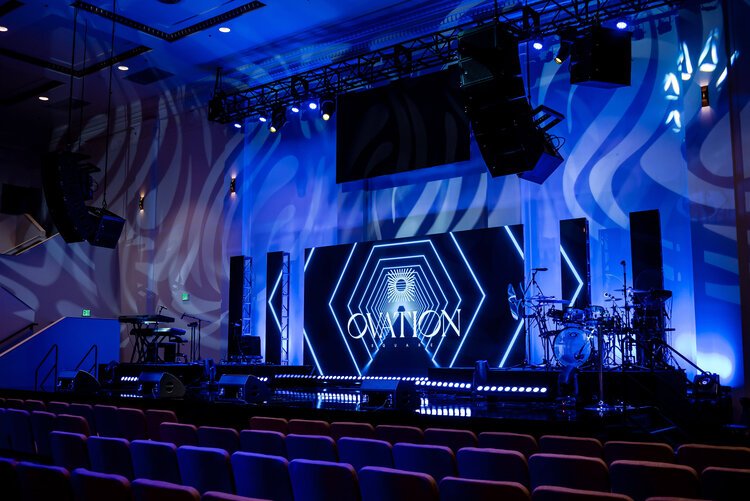Tailored Services by Your Event Source Charlotte for Flawless Event Execution.
Tailored Services by Your Event Source Charlotte for Flawless Event Execution.
Blog Article
Why Event Resource Solutions Are Important for Smooth Event-Driven Designs
In the world of contemporary software advancement, event-driven designs are increasingly common, yet their efficiency pivots on the implementation of durable occasion source solutions. As industries shift in the direction of real-time data handling, comprehending the implications of event sourcing becomes vital.
Recognizing Event-Driven Designs
Event-driven architectures (EDAs) stand for a paradigm change in creating software application systems, where the circulation of details is figured out by the incident of occasions. This building design advertises a decoupled approach, permitting various components to interact asynchronously. In EDAs, occasions serve as the primary ways of communication, setting off procedures or workflows in feedback to particular events, such as user activities or system changes.
The trick parts of an EDA consist of event producers, which produce events; event consumers, which respond to events; and occasion channels, which help with the transmission of events in between manufacturers and customers. This framework boosts system responsiveness and scalability, as components can separately refine occasions without the need for synchronous interaction.
Moreover, EDAs allow real-time information processing, making them ideal for applications needing instant understandings-- such as fraudulence detection in financial systems or monitoring IoT devices. They additionally sustain a more agile development setting, permitting groups to repeat swiftly and deploy brand-new features with marginal disturbance to existing solutions.
The Duty of Event Source Solutions
While numerous elements in an event-driven design depend on effective communication, event source solutions play an important role in creating and managing the circulation of occasions. These services function as the first factor of event creation, capturing changes in state or customer actions and translating them right into occasions that can be propagated via the system.

Additionally, they promote the decoupling of manufacturers and customers within an architecture, allowing systems to scale independently. This decoupling is essential for improving system resilience, as it minimizes reliances that could or else result in bottlenecks or solitary points of failure.
Advantages of Real-Time Data Handling
Real-time information handling considerably enhances the capabilities of event-driven architectures by enabling prompt insights and actions based upon the most recent information (your event source charlotte). This immediacy not just speeds up decision-making yet additionally raises the importance and accuracy of those decisions. Organizations can reply to occasions as they take place, decreasing latency and improving operational agility
One of the primary benefits of real-time information processing is the ability to catch and analyze information constantly. This promotes aggressive procedures instead than reactive feedbacks, allowing companies to anticipate fads and possible issues prior to they escalate. For instance, in sectors such as money or e-commerce, view real-time analytics can identify deceptive purchases or customer actions changes, allowing speedy treatments that alleviate danger and optimize consumer fulfillment.

Ultimately, the assimilation of real-time information handling right into event-driven architectures equips organizations to harness the full capacity of their data, driving advancement and competitive benefit in a significantly vibrant industry.
Enhancing System Communication
Reliable communication between systems is crucial for the success of any type of event-driven architecture. Occasion resource options facilitate click for source this interaction by supplying a robust framework for capturing and sending occasions in actual time. By standardizing exactly how systems generate and consume events, these solutions remove uncertainty and foster interoperability, allowing diverse systems to work with each other perfectly.
Making use of event streams enables systems to respond promptly to adjustments, making sure that all parts are aligned and educated. This responsiveness is necessary in atmospheres where prompt information exchange directly affects decision-making and overall system performance. Event source options use devices for event filtering system, change, and transmitting, enhancing the efficiency of information circulation between systems.
In addition, by implementing a publish-subscribe design, event source services decouple system elements, permitting higher flexibility and scalability. This decoupling implies that systems can advance separately, making it much easier to incorporate new performances or change existing parts without interfering with general communication.
Future Fads in Occasion Sourcing


One more substantial pattern is the increase of cloud-native event sourcing services. These systems take advantage of the scalability and versatility of cloud facilities, allowing companies to efficiently take care of visit this web-site and save vast amounts of occasion data without the expenses of standard systems. This shift advertises greater access and cooperation throughout teams.
Furthermore, the adoption of microservices design is influencing occasion sourcing practices. As services progressively segment their applications into smaller, independent solutions, event sourcing gives a durable mechanism to keep data uniformity and stability across these distributed systems.
Conclusion
To conclude, occasion resource solutions act as an essential structure for smooth event-driven designs, enabling efficient event generation and management. By promoting asynchronous interaction between components, these services enhance system durability and promote the independent development of services. The advantages of real-time data handling and improved system communication highlight the significance of adopting occasion sourcing techniques. As the need for durable distributed systems rises, the importance of event source remedies will proceed to grow, shaping the future of event-driven design.
Report this page